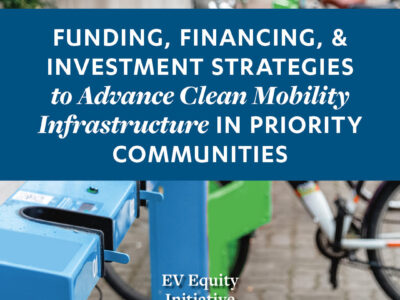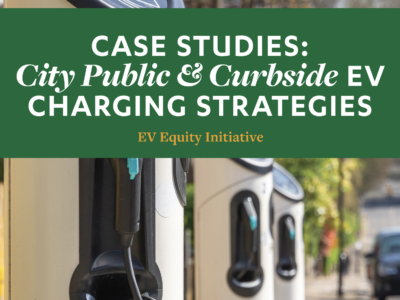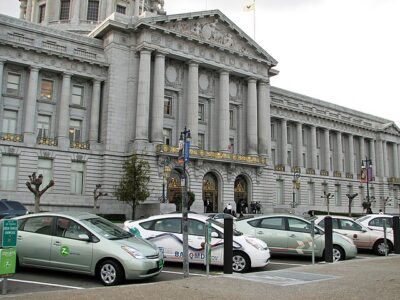mobility equity
A Data-Driven Case for Level 1 EV Charging in Multifamily Housing–and its Equity Implications
New data insights from a community choice aggregator elevate the role of Level 1 charging in an equitable (and rapid) EV transition
Discussions about Level 1 (L1) and Level 2 (L2) electric vehicle charging generally posit a simple tradeoff: L2 (which requires a dedicated high-capacity electrical hookup) offers greater speed and convenience, while L1 (which can run on a standard 120V outlet) offers broader scale and affordability. L1’s benefits find particular traction in residential charging spaces–where drivers …
CONTINUE READINGFinancing and Investment Strategies for an Equitable Clean Mobility Transition
New CLEE / Prospect Silicon Valley report outlines top strategies from a series of expert convenings
The transition to 100 percent zero-emission vehicle (ZEV) sales by 2035 will require massive investment in electric vehicle charging infrastructure throughout California and in other states that have adopted the same phaseout targets. A variety of structural barriers to charging access make California’s priority populations particularly reliant on public charging infrastructure to meet their ZEV …
Continue reading “Financing and Investment Strategies for an Equitable Clean Mobility Transition”
CONTINUE READINGHow Can Cities Deliver Equitable EV Charging to the Curbside and Public Right of Way?
New CLEE Report Presents Case Studies and Elevates Key Strategies
As California and other states transition to one hundred percent zero-emission new vehicle (ZEV) sales by 2035, local governments will play a crucial role in addressing inequities in the ZEV transition. Limited access to abundant and reliable charging equipment remains a key barrier to ZEV adoption for all, and city governments can lead efforts to …
CONTINUE READINGHow are California Cities Planning for the EV Transition?
Some leaders are emerging, but plenty of room for more equity-centered programs
With California’s 2035 zero-emissions vehicle transition target now just over a decade away, state and local leaders face an urgent need to ensure that sufficient electric vehicle charging infrastructure is available to meet the needs of all drivers. Electrified vehicles constituted nearly a quarter of all new sales in 2023, but publicly accessible chargers still …
Continue reading “How are California Cities Planning for the EV Transition?”
CONTINUE READINGAre California Cities Ready for an Equitable EV Transition?
How well are cities planning for the transition, and how can we track readiness?
A recent report from ACEEE reinforces California’s leadership in vehicle electrification–at the state level, California’s EV policies, incentives, and supporting strategies outpace the closest competitors by a significant margin (and most pro-electrification states’ programs owe their design and federal authorization to California): Source: ACEEE, 2023 Transportation Electrification Scorecard. But with …
Continue reading “Are California Cities Ready for an Equitable EV Transition?”
CONTINUE READINGMapping City Priorities for an Equitable EV Infrastructure Rollout
How can cities identify high-priority, high-feasibility, high-utility sites?
As state regulators and auto manufacturers begin the drive toward 100 percent zero-emission vehicle sales by 2035, leaders across California face a daunting challenge. How can they ensure that all Californians–not just those who can afford a new EV and a charger in their garage–have access to affordable, reliable, and convenient vehicle charging that meets …
Continue reading “Mapping City Priorities for an Equitable EV Infrastructure Rollout”
CONTINUE READING






